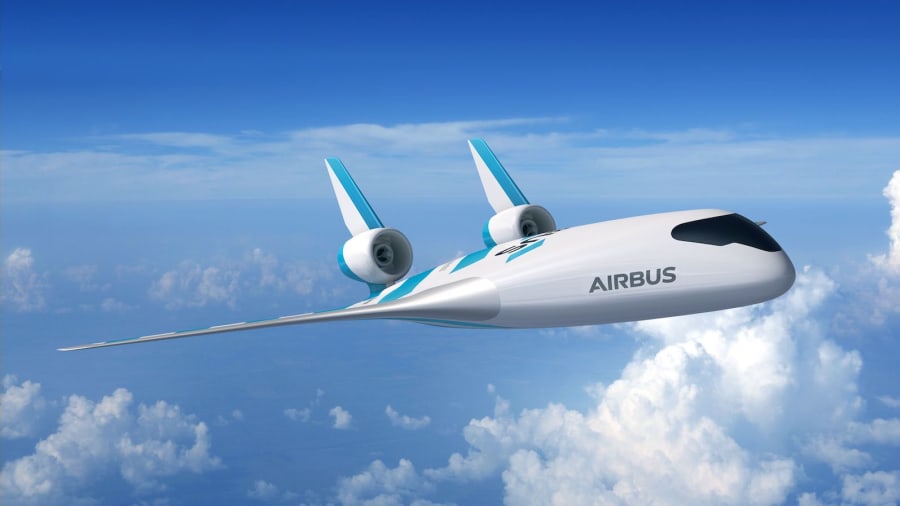Som du har lest her på bloggen, så har Boeing/NASA jobbet med konseptet i mange år. Airbus følger opp i fin Kina kopieringsstil. (Red)
Singapore, 11 February 2020 – Airbus has
revealed MAVERIC (Model Aircraft for Validation and Experimentation of Robust
Innovative Controls) its "blended wing body" scale model technological demonstrator.
At 2 metres long and 3.2
metres wide, with a surface area of about 2.25m², MAVERIC features a
disruptive aircraft design, that has
the potential to reduce fuel consumption by up-to 20 percent compared to
current single-aisle aircraft. The “blended wing body” configuration also opens up new possibilities
for propulsion systems type and integration, as well as a versatile cabin for a
totally new on-board passenger experience.
Launched in 2017, MAVERIC
first took to the skies in June 2019. Since then the flight-test campaign has
been on-going and will continue until the end of Q2 2020.
“Airbus is leveraging
emerging technologies to pioneer the future of flight. By testing disruptive
aircraft configurations, Airbus is able to evaluate their potential as viable
future products,” said Jean-Brice Dumont, EVP Engineering Airbus. “Although
there is no specific time line for entry-into-service, this technological
demonstrator could be instrumental in bringing about change in commercial aircraft architectures
for an environmentally sustainable future for the aviation industry.”
Airbus is using its core strengths and
capabilities of engineering and manufacturing, in close collaboration with an
extended innovation ecosystem, to accelerate traditional research and development
cycles. By doing this Airbus is able to achieve proof of concepts, at a
convincing scale and speed, thereby driving forward maturity and increasing
their value.
Through AirbusUpNext, a research programme,
Airbus is currently working on a number
of demonstrator projects in parallel; E-FAN X (hybrid-electric propulsion),
fello’fly (v-shaped “formation” flight) and ATTOL (Autonomous Taxi Take-Off
& Landing).
* * *
For further information about the MAVERIC story, please
click here
|
tirsdag 11. februar 2020
Airbus viser Blended Wing modell i Singapore - Airbus / Curt Lewis
Abonner på:
Legg inn kommentarer (Atom)





Ingen kommentarer:
Legg inn en kommentar
Merk: Bare medlemmer av denne bloggen kan legge inn en kommentar.